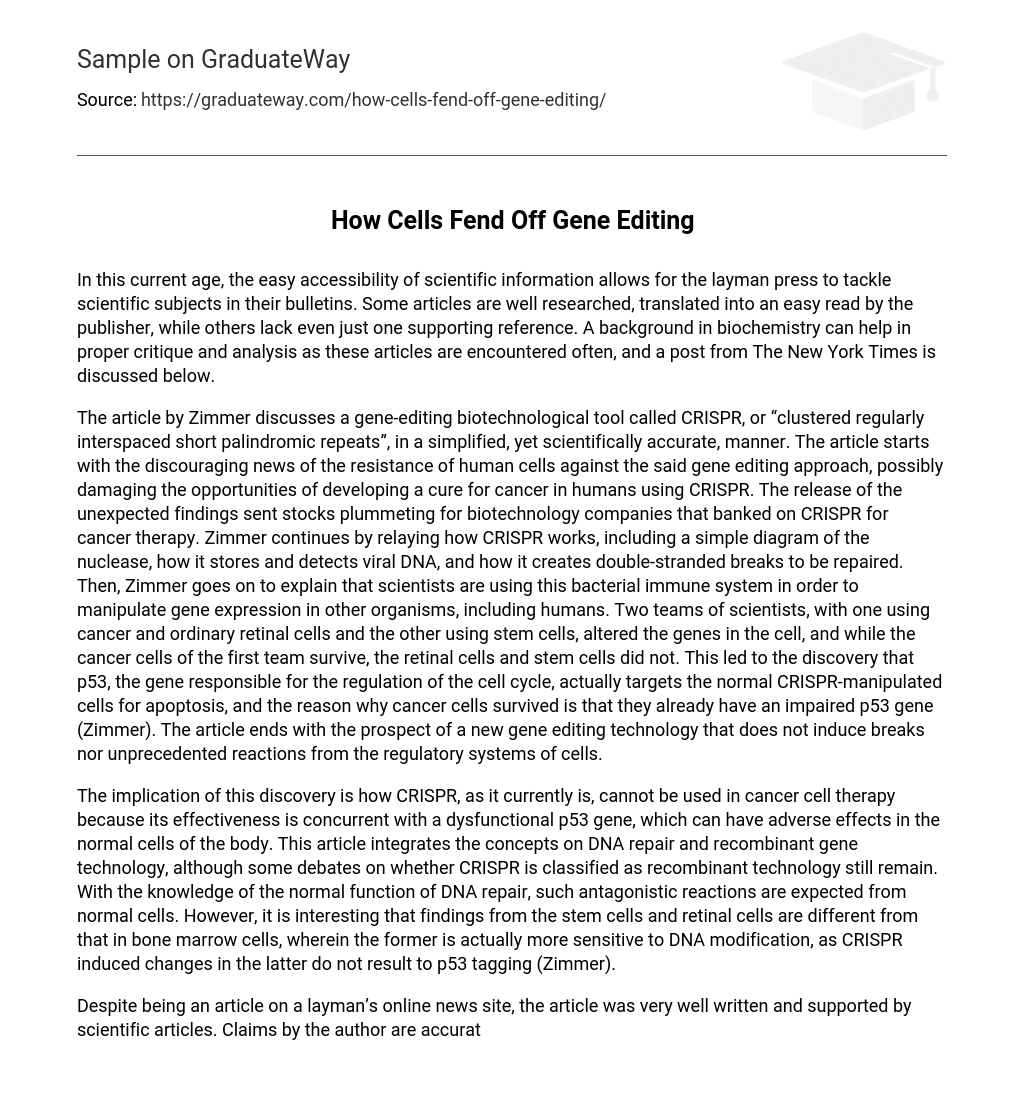In this current age, the easy accessibility of scientific information allows for the layman press to tackle scientific subjects in their bulletins. Some articles are well researched, translated into an easy read by the publisher, while others lack even just one supporting reference. A background in biochemistry can help in proper critique and analysis as these articles are encountered often, and a post from The New York Times is discussed below.
The article by Zimmer discusses a gene-editing biotechnological tool called CRISPR, or “clustered regularly interspaced short palindromic repeats”, in a simplified, yet scientifically accurate, manner. The article starts with the discouraging news of the resistance of human cells against the said gene editing approach, possibly damaging the opportunities of developing a cure for cancer in humans using CRISPR. The release of the unexpected findings sent stocks plummeting for biotechnology companies that banked on CRISPR for cancer therapy. Zimmer continues by relaying how CRISPR works, including a simple diagram of the nuclease, how it stores and detects viral DNA, and how it creates double-stranded breaks to be repaired. Then, Zimmer goes on to explain that scientists are using this bacterial immune system in order to manipulate gene expression in other organisms, including humans. Two teams of scientists, with one using cancer and ordinary retinal cells and the other using stem cells, altered the genes in the cell, and while the cancer cells of the first team survive, the retinal cells and stem cells did not. This led to the discovery that p53, the gene responsible for the regulation of the cell cycle, actually targets the normal CRISPR-manipulated cells for apoptosis, and the reason why cancer cells survived is that they already have an impaired p53 gene (Zimmer). The article ends with the prospect of a new gene editing technology that does not induce breaks nor unprecedented reactions from the regulatory systems of cells.
The implication of this discovery is how CRISPR, as it currently is, cannot be used in cancer cell therapy because its effectiveness is concurrent with a dysfunctional p53 gene, which can have adverse effects in the normal cells of the body. This article integrates the concepts on DNA repair and recombinant gene technology, although some debates on whether CRISPR is classified as recombinant technology still remain. With the knowledge of the normal function of DNA repair, such antagonistic reactions are expected from normal cells. However, it is interesting that findings from the stem cells and retinal cells are different from that in bone marrow cells, wherein the former is actually more sensitive to DNA modification, as CRISPR induced changes in the latter do not result to p53 tagging (Zimmer).
Despite being an article on a layman’s online news site, the article was very well written and supported by scientific articles. Claims by the author are accurate and based on scientific studies, even providing the links to the articles where the pieces of evidence are from. It can be even be considered as a layman scientific review. It is rather enjoyable to read, as no absurd claims were made by the author. This article is able to supplement to the already existing knowledge possessed from the discussions in class, providing a new insight that gene recombination or gene editing is not a “miracle tool” that can cure all diseases (Zimmer). In line with new discoveries and the development of new technologies that target diseases, or even those generally aimed towards the betterment of society, the natural biochemical processes of the body need to be considered. This article emphasizes that realization, especially when dealing with the alterations in DNA which is the most basic biomolecule of life.





